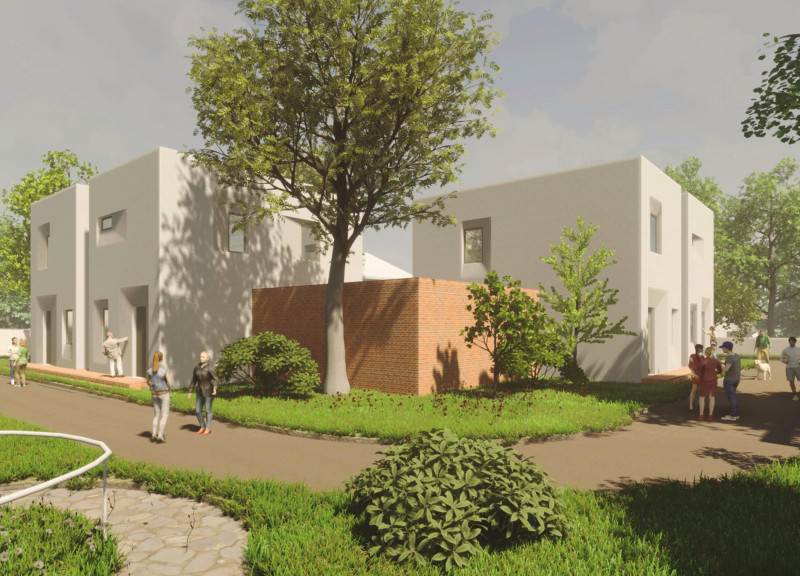5 key facts about this project
The design focuses on creating housing for visually impaired individuals, located in Wrocław, Poland. The concept involves a series of semi-detached houses connected by a sensory garden. This garden acts as a communal area that encourages social interaction and offers a space for outdoor activities. The overall aim is to enhance accessibility while ensuring safety and comfort for the residents.
Design Concept
Accessibility is at the core of this plan. The apartments feature a layout designed with a linear arrangement that uses bumpy floor panels. These panels serve as tactile indications, helping residents navigate their homes with ease. The design promotes independence by allowing individuals to engage with their surroundings confidently. It acknowledges the importance of both safety and exploration in daily living.
Spatial Organization
A key element of the design is the clear distinction between private and shared spaces. Full or openwork brick walls define the boundaries of private areas, while also facilitating interaction with communal spaces. The sensory garden stands out as a central feature, offering curvy pathways and railings that enhance safety for users. This organization fosters social connections without compromising personal privacy, creating a balanced residential experience.
Sustainability and Materiality
The project also addresses environmental concerns and follows Polish regulations related to housing density. Each semi-detached unit is designed to accommodate multiple apartments, which maximizes land use while meeting community demands. Attention is given to material choices, with plans to use demolition brick and hemp concrete. These materials align with sustainable building practices, helping to minimize ecological impact during construction.
The sensory garden is thoughtfully designed, with pathways that meander through well-landscaped spaces. These paths not only support physical movement but also promote emotional well-being. They provide a tranquil environment for residents, inviting them to connect with nature and enjoy their surroundings.



















































